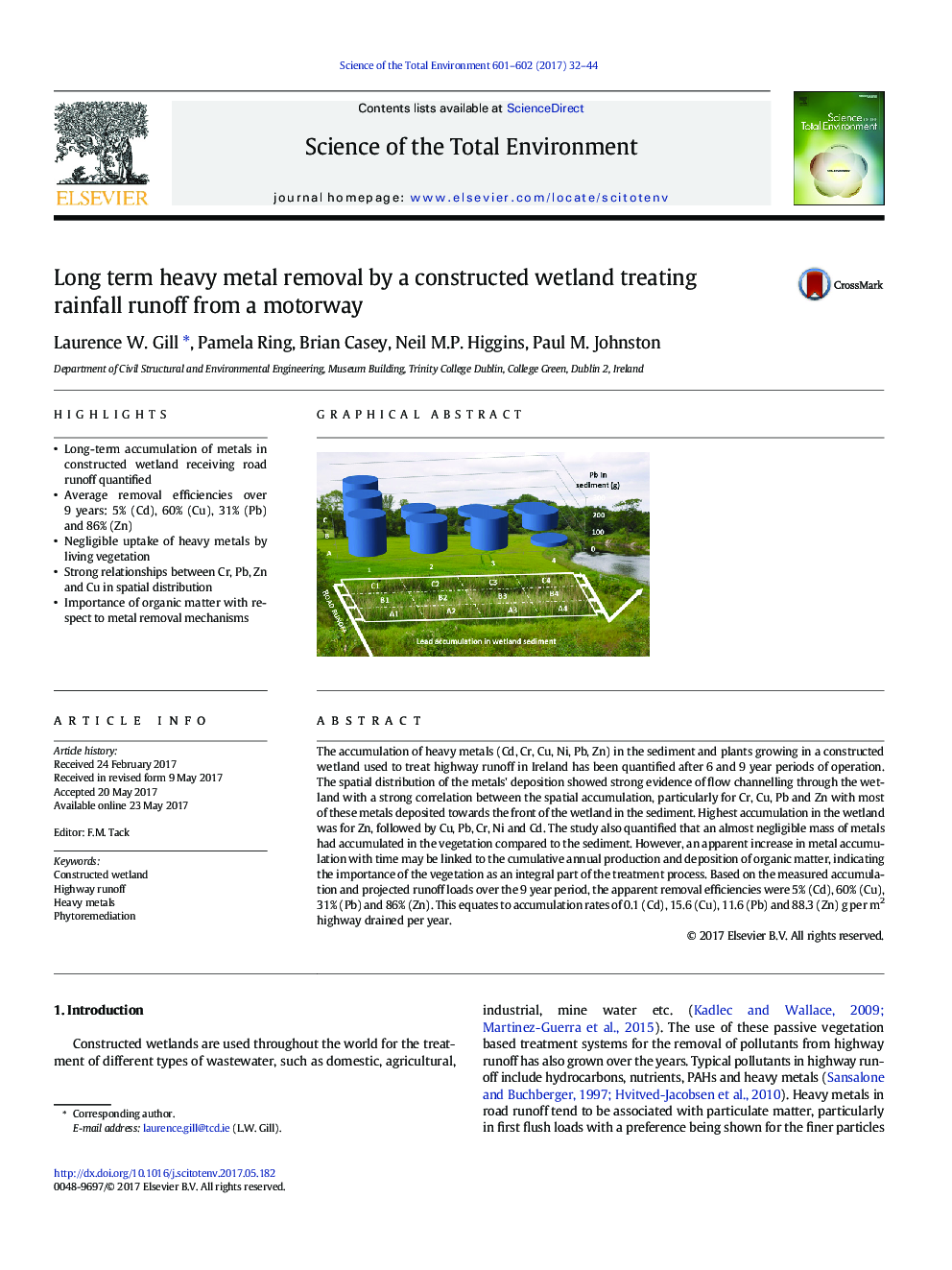| Article ID | Journal | Published Year | Pages | File Type |
|---|---|---|---|---|
| 5750361 | Science of The Total Environment | 2017 | 13 Pages |
â¢Long-term accumulation of metals in constructed wetland receiving road runoff quantifiedâ¢Average removal efficiencies over 9 years: 5% (Cd), 60% (Cu), 31% (Pb) and 86% (Zn)â¢Negligible uptake of heavy metals by living vegetationâ¢Strong relationships between Cr, Pb, Zn and Cu in spatial distributionâ¢Importance of organic matter with respect to metal removal mechanisms
The accumulation of heavy metals (Cd, Cr, Cu, Ni, Pb, Zn) in the sediment and plants growing in a constructed wetland used to treat highway runoff in Ireland has been quantified after 6 and 9Â year periods of operation. The spatial distribution of the metals' deposition showed strong evidence of flow channelling through the wetland with a strong correlation between the spatial accumulation, particularly for Cr, Cu, Pb and Zn with most of these metals deposited towards the front of the wetland in the sediment. Highest accumulation in the wetland was for Zn, followed by Cu, Pb, Cr, Ni and Cd. The study also quantified that an almost negligible mass of metals had accumulated in the vegetation compared to the sediment. However, an apparent increase in metal accumulation with time may be linked to the cumulative annual production and deposition of organic matter, indicating the importance of the vegetation as an integral part of the treatment process. Based on the measured accumulation and projected runoff loads over the 9Â year period, the apparent removal efficiencies were 5% (Cd), 60% (Cu), 31% (Pb) and 86% (Zn). This equates to accumulation rates of 0.1 (Cd), 15.6 (Cu), 11.6 (Pb) and 88.3 (Zn) g per m2 highway drained per year.
Graphical abstractDownload high-res image (358KB)Download full-size image
